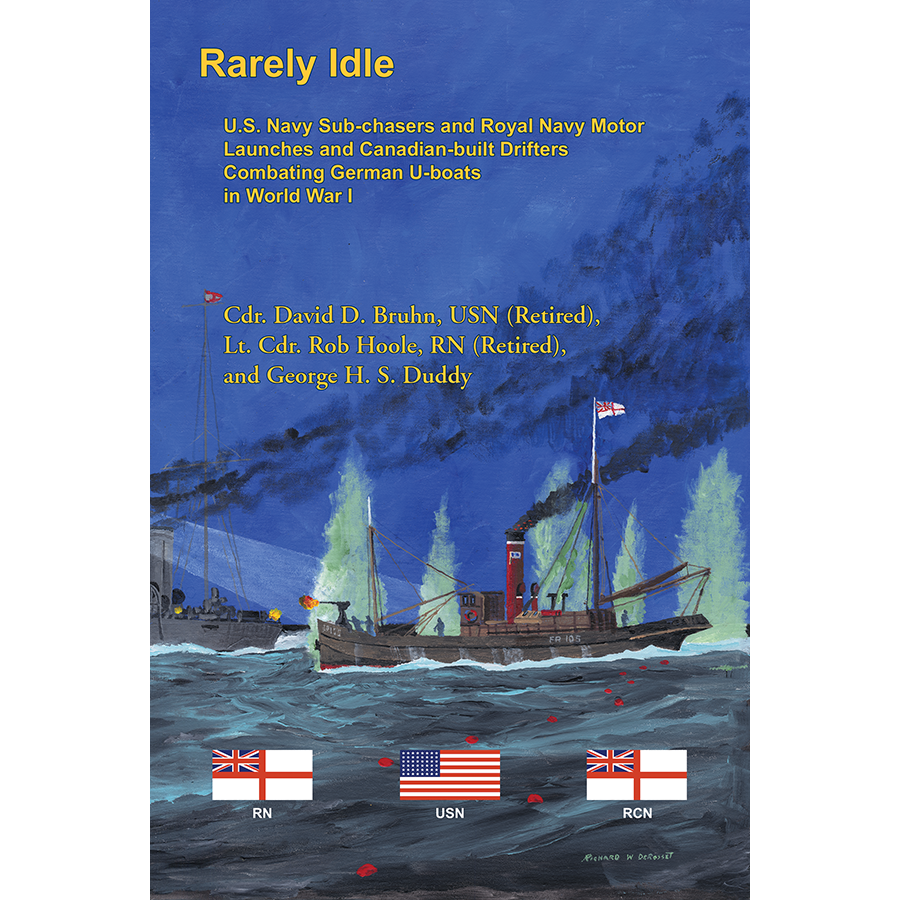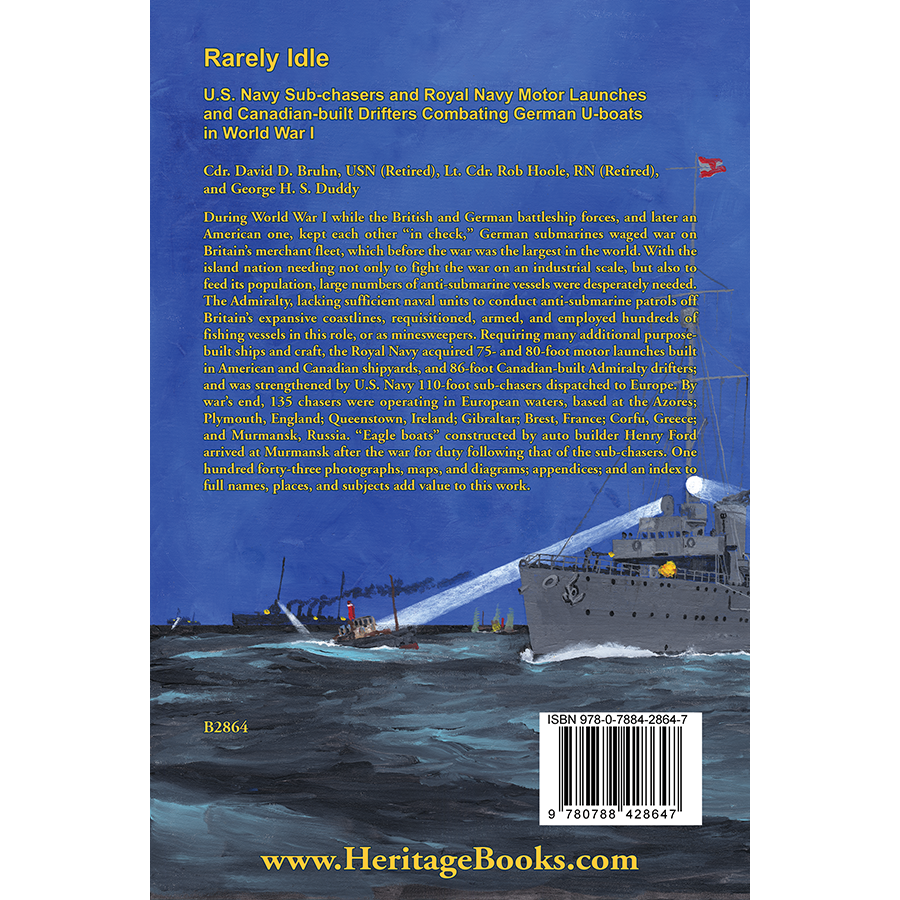Rarely Idle: U.S. Navy Sub-chasers and Royal Navy Motor Launches and Canadian-built Drifters Combating German U-boats in World War I
Couldn't load pickup availability
During World War I, while the British and German battleship forces, and later an American one, kept each other "in check," German submarines waged war on Britain's merchant fleet, which before the war was the largest in the world. With the island nation needing not only to fight the war on an industrial scale, but also to feed its population, large numbers of anti-submarine vessels were desperately needed. The Admiralty, lacking sufficient naval units to conduct anti-submarine patrols off Britain's expansive coastlines, requisitioned, armed, and employed hundreds of fishing vessels in this role, or as minesweepers. Requiring many additional purpose-built ships and craft, the Royal Navy acquired 75- and 80-foot motor launches built in American and Canadian shipyards, and 86-foot Canadian-built Admiralty drifters; and was strengthened by U.S. Navy 110-foot sub-chasers dispatched to Europe. By war's end, 135 chasers were operating in European waters, based at the Azores; Plymouth, England; Queenstown, Ireland; Gibraltar; Brest, France; Corfu, Greece; and Murmansk, Russia. "Eagle boats" constructed by auto builder Henry Ford arrived at Murmansk after the war for duty following that of the sub-chasers. One hundred forty-three photographs, maps, and diagrams; appendices; and an index to full names, places, and subjects add value to this work.
Cdr. David D. Bruhn, USN (retired), Lt. Cdr. Rob Hoole, RN (retired), and George H. S. Duddy
2024, 6" x 9", paper, 312 pp.
ISBN: 9780788428647
101-B2864

